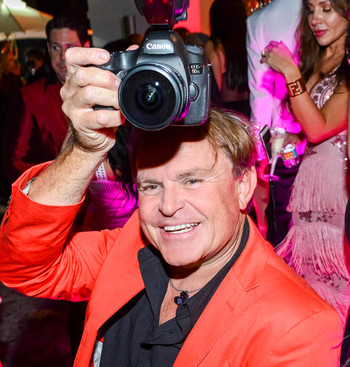
Tomas Loewy was born in Prague and grew up in Buenos Aires, Munich, New York. Moving to South Florida gave him the vision of Miami's optimism and creativity enhancing sunshine, shooting for body and soul. Based on his international background with previous ventures in journalism, television, film and the online world, Tomas chose photography, molding his images with a love for moments, situations, time lapse, detail and human emotions.
Part of Tomas Loewy´s photography comes from the refusal to be content with the comfortable life most people lead. Comfortable not in a material sense, but most of us get (too) comfortable in the knowledge that basic needs are satisfied. As a consequence people strive to avoid ruptures in their biographies for the sake of that one paralyzing notion, stability.
Sometimes stability is good, sometimes not. The right combination of stability and the lack thereof is a personal choice. On an artistic level it hen becomes intuition or possibly talent.
Tomas seems to always look for a way not to be too comfortable, rather to find new challenges, new endeavors - and master them. The challenge now is art in its many aspects. Photography and video installations being a tool to express emotions and impact other lives, even a little, by showing facets of life which the viewer would not have encountered without seeing these photographs.
In 2011 his book "Radical Burning Desert - Burning Man Photography 2004-2010" was published.
Also there is the Visual Evolution of Wynwood, an ongoing project showing the combination of artist and photojournalist Tomas Loewy, setting out to record the unique street art culture of the Wynwood Art District in Miami. Since 2011 Loewy has been documenting Wynwood's art walls using his distinct visual style to produce unique works that blur boundaries between photography, painting and graphic art., blending it into a collage of it’s own.
Loewy goes beyond his artistic expression and uses the Visual Evolution of Wynwood as an anthropological study of a culturally dynamic urban space where street art is driven by socioeconomic forces with some art walls surviving only a few days before disappearing forever.
Also in the making is a feature length non verbal (in the tradition of Koyaaniqatsi, Baraka) film about Burning Man.
And, if that was not enough please read his Artist Statement:
My work explores the relationship between a superficial, visually appealing punch and the tyrannical need to express relevance although the personal meaning is hidden. To reveal it would be too much, to ignore it, not enough.
With influences as diverse as Kafka, Dali and Rammstein – without forgetting Lichtenstein and Wittgenstein - subversive new tensions are filtered into my vision from both explicit and overtly transparent layers, in constant dialogue with each other. That is Burning Man for me, but also other projects, such as the Visual Evolution of Wynwood and the Golden Statues: a sum of all parts, which becomes much bigger than that simple addition, reconfigured to suit one’s ephemeral efforts – always fitting, where there is no apparent reason to do so.
Ever since I left steady employment as a software developer for Siemens I have been fascinated by the essential unreality of a mutating zeitgeist. What starts out as the latest triumph of the human spirit soon becomes manipulated by the tragedy of copycats, leaving only a sense of nihilism and the start of a new radically self-inspired and self-reliant beginning. Taking this into consideration I like to challenge myself to always see and find a new creative dawn in the continuity of constant creation and re-creation.
As shifting replicants fill the visually void world with selfies and group images even at a most influential event like Burning Man, or in front of any object of touristic desire (such as the Art Walls in Miami’s Wynwood district), becoming uninspiringly frozen through diligent and repetitive practice, I am fighting (mostly with myself, but also with the adoring world) to stand out with every single image, so that the viewer is left with a testament to spirit and spiritual effort triumphing - with the will to overcome the lack of vision of our era.
As Wittgenstein remarked, eternal life belongs to those who live in the present. Our life has no end in the way in which our visual field has no limits.
